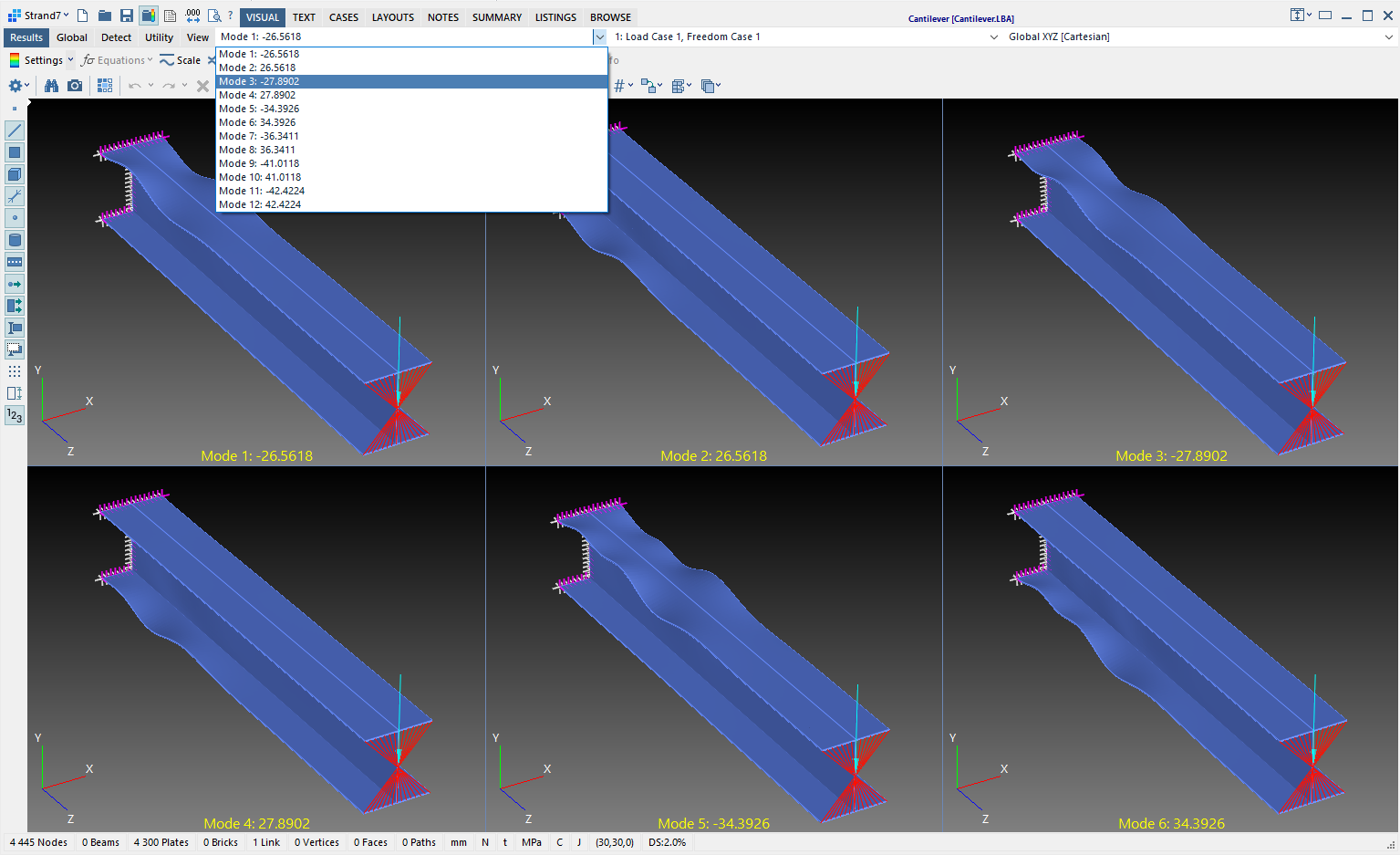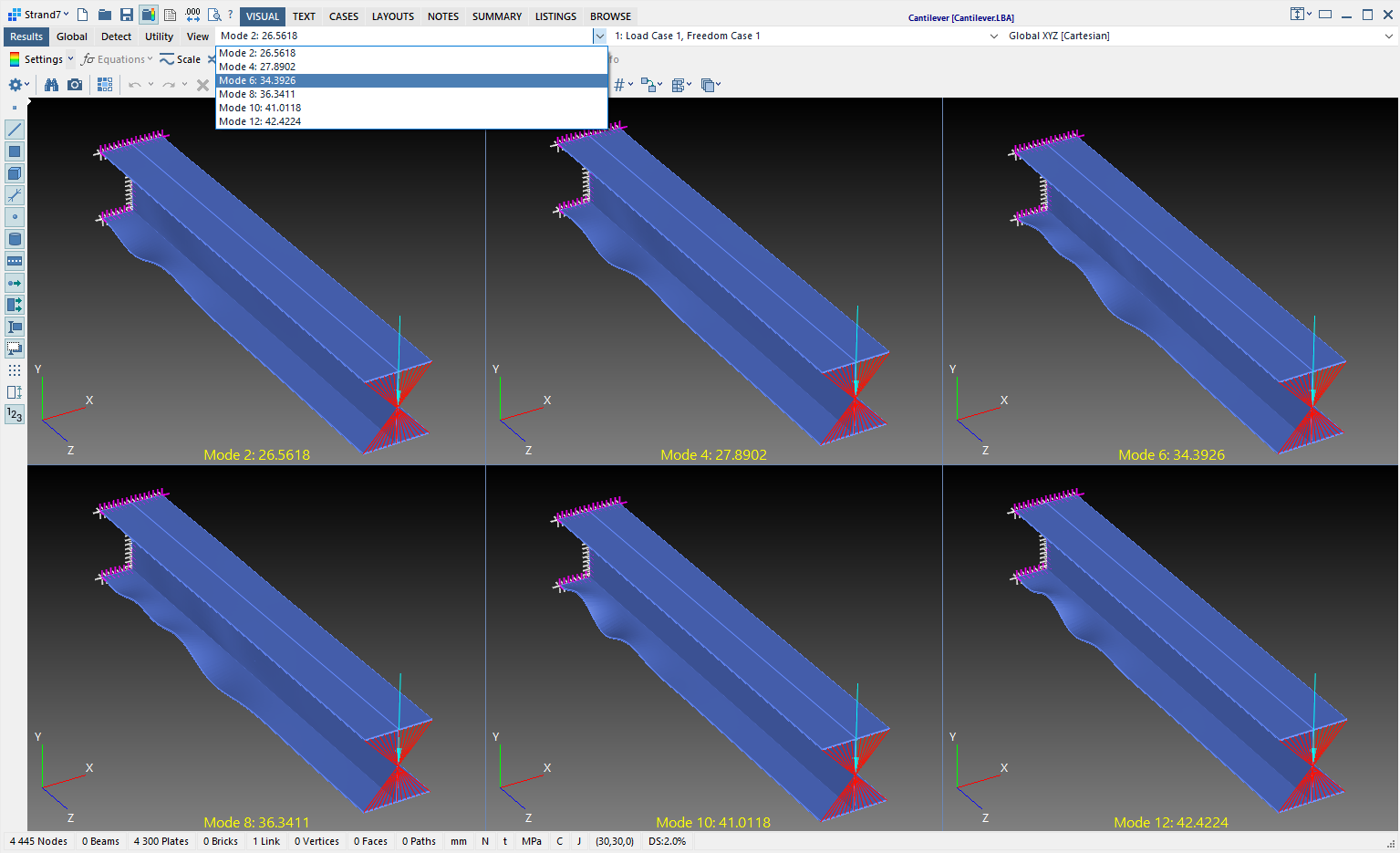Strand7 Snippets
Snippet #5: Open Result File Options |

|
| Result files dialog | |||||||||||||||||||||||
|
To select a result file for opening in the Strand7 GUI, the Available result files dialog below is used. A result file can be opened by selecting it from the list and clicking the Open icon, or by double-clicking the file name in the list.
|
|||||||||||||||||||||||

|
|||||||||||||||||||||||
|
One of the icons at the top of this dialog is the Options icon. This icon opens the options page, which allows you to hide particular result cases from the result file. For example, for LINEAR BUCKLING analysis you can Hide negative modes. |
|||||||||||||||||||||||

|
|||||||||||||||||||||||
|
The following image shows the Strand7 multi-view display of the buckling results for a short cantilever with a lateral load – both positive and negative buckling modes are calculated and listed in the result case dropdown list. |
|||||||||||||||||||||||

|
|||||||||||||||||||||||
|
By setting Hide negative modes before opening the file, only the positive modes are listed, making it easier to post-process just the modes that are likely to be of interest (only the flange in compression is now shown to buckle). |
|||||||||||||||||||||||

|
|||||||||||||||||||||||
| Summary of options | |||||||||||||||||||||||
|
|||||||||||||||||||||||
|
|
|||||||||||||||||||||||
|
|
|||||||||||||||||||||||

 Menu
Menu